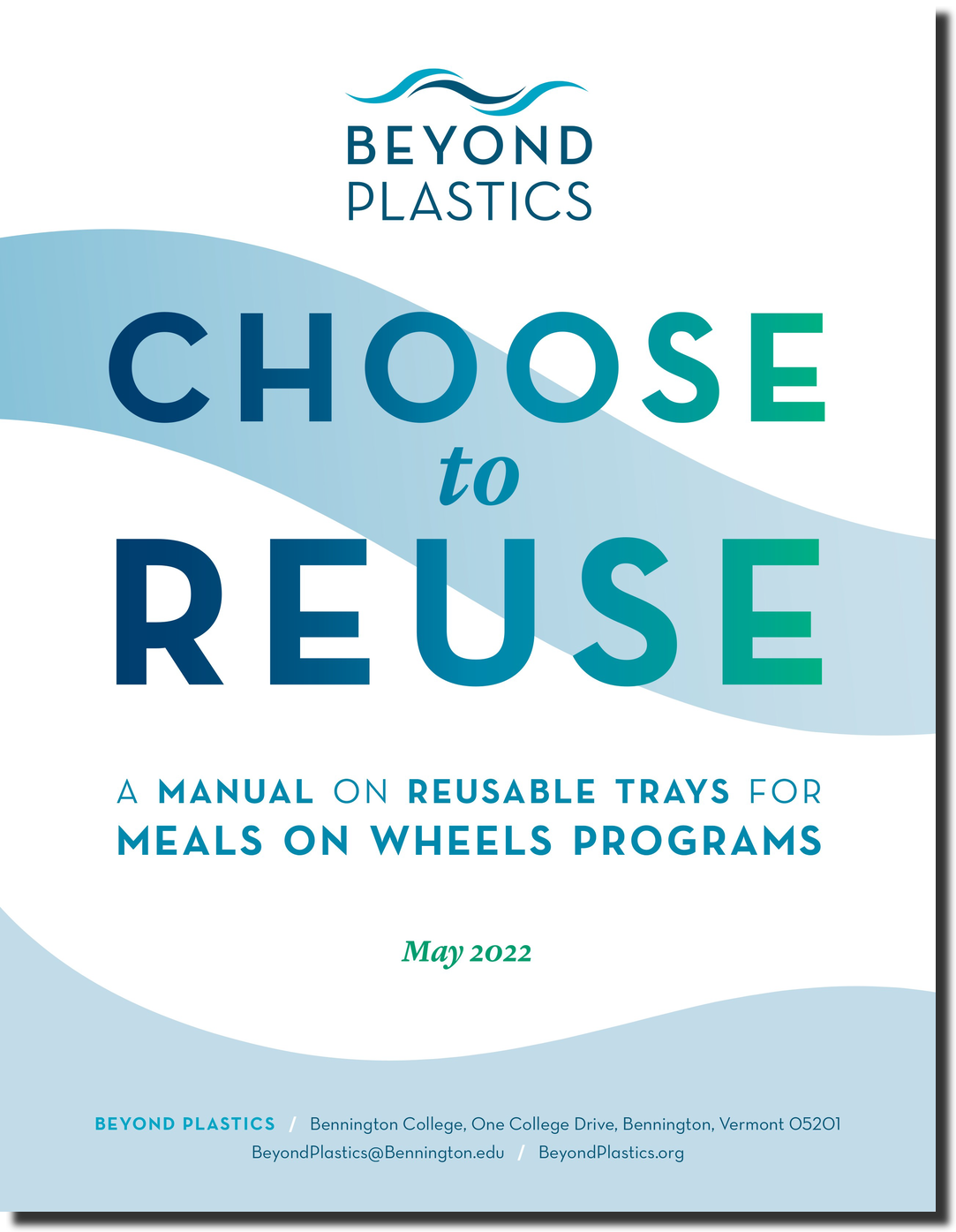Choose to Reuse: A Manual on Reusable Trays for Meals on Wheels Programs
MAY 2022 | BEYOND PLASTICS
We’ve created a helpful manual to guide any meal delivery service that’s interested in switching to reusable trays through all the considerations and decisions involved.
The guide is based on the real-world experiences of Meals on Wheels programs around the country that successfully employ reusable trays and offers practical advice, tools, resources, and case studies.
You can download the guide as a PDF in either web or print resolution:
Spread The Word
We’ve put together a simple toolkit to make it easy to spread the word about this handy new guide to help meal delivery programs ditch disposables and make the switch to reusable dishes and trays.
Get Involved
Beyond Plastics has launched a project to help Meals on Wheels programs across the country to switch from damaging, single-use disposable plastics to reusable meal delivery trays. Making the switch to reusables is a win-win for both the programs and the environment.
For example, a single Meals on Wheels program that feeds 5 meals a week to 500 people could save $32,000 in material costs in just the first year of making the switch, as well as save 26,650 gallons of water, divert 292.5 cubic yards of waste from the landfill, and reduce its climate change emissions equivalent to taking 1.7 standard passenger vehicles off U.S. roads for a full year. Check out the fact sheet below for more details on the benefits of making this switch.
Do you work at or manage a Meals on Wheels program or are you a senior services representative or a community member that wants to learn more and help Meals on Wheels switch to reusable containers? Click this link to get involved.
Get Individual Support
Alexis Goldsmith, our National Organizing Director is available to provide hand-holding, troubleshooting and guidance to anyone who wants to engage in this project.






